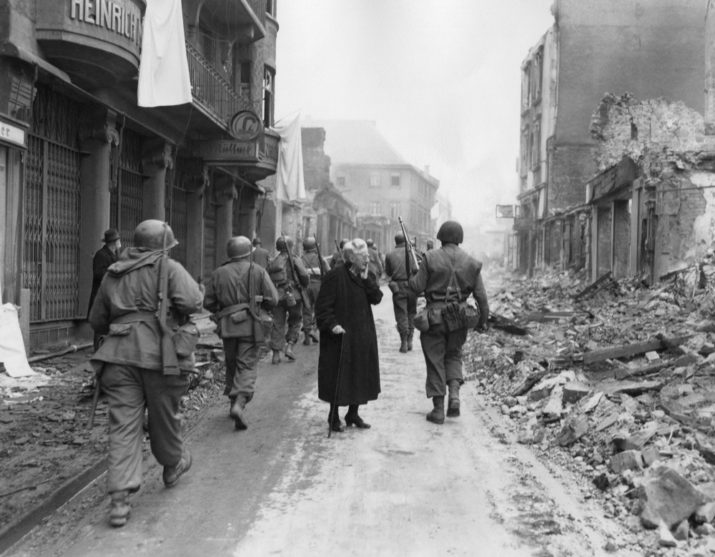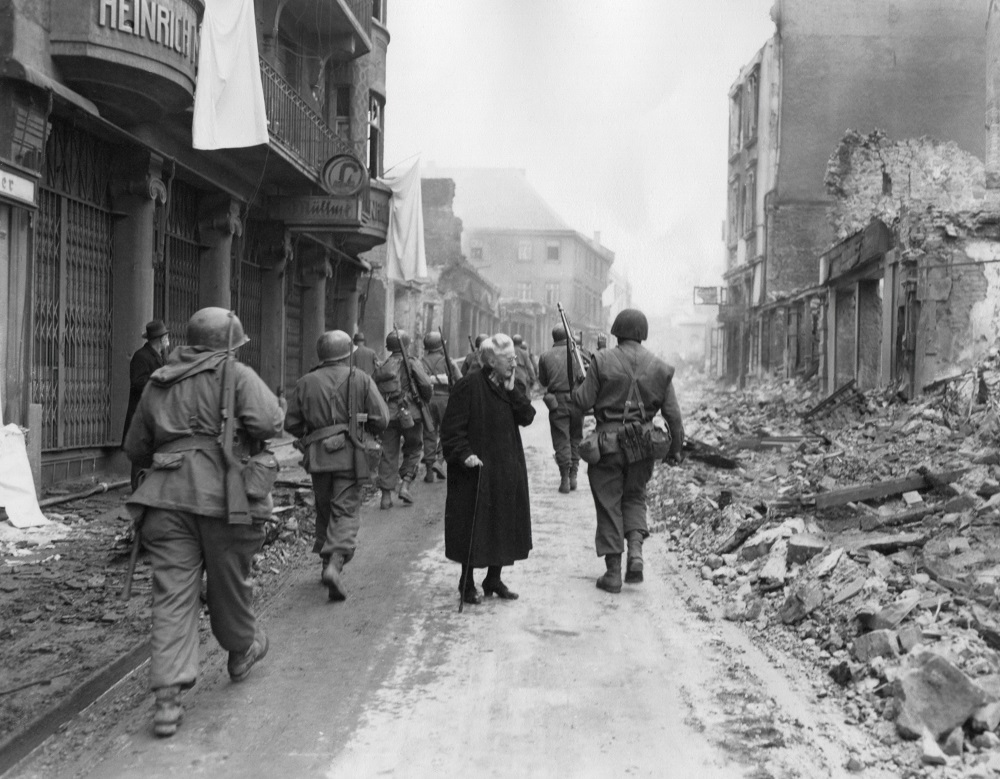

This is part of our special feature Memory and the Politics of the Past: New Research and Innovation.
The strength and potential of memory research – epistemologically (as a source of knowledge), therapeutically or politically (as a means of intervention) – arguably lies in its interdisciplinary scope: the fact that it brings people from across the humanities, social sciences, and natural sciences together to identify problems and explore solutions. But this cross-disciplinary collaboration is often easier said than done. We think that we are engaging in a shared inquiry without realizing that we might be talking about quite different things. Even what we mean by “memory” might be different. Methods, rules of evidence, and expected outcomes vary in different fields. What the literary scholar or historian does might be interesting, but in the end irrelevant to the cognitive psychologist or neuroscientist and vice-versa. Does it matter if the person suffering from retrograde amnesia, say, is Hutu or Tutsi; if they are living in Kigali or Kinshasa or New York City; if they were born before, during, or after the 1994 conflict in which around 800,000 people were slaughtered? Does it matter to a historian of post-conflict Rwanda how memories are formed in the brain? Should they be talking to one another? Why and toward what ends? When and how does cross-disciplinary dialogue and collaboration matter?
A couple of years ago, a colleague and I taught a graduate course called “Mapping Memory: History, Culture, and the Brain.” Cross-listed between the Department of Comparative Literature and the Center for Mind, Brain, and Culture at Emory University, the course intended to bring perspectives from the humanities and the sciences together to explore the complex relationships among the past (what happened), the present (how we live now), and the future (what we carry forward). As the course description put it:
Through dialogue and collaboration, students will engage one another in discussion of methods, materials, and rules of evidence that are normative in their fields, but don’t necessarily translate across different fields. In this way, the course will function as virtual lab for the kind of interdisciplinary and collaborative work that the study of memory arguably calls for.
Twelve students took the class. Ten from the humanities (literature, history, cultural anthropology, religion, and philosophy), two from the sciences (developmental psychology and neuroscience). And while this selection was undoubtedly influenced by the fact that both my colleague and I were from the humanities (both from literary and cultural studies), the skewed numbers made two things clear from the outset: (1) the conditions for dialogue, much less collaboration, weren’t very promising; (2) the interest in cross-disciplinary dialogue was very one-sided.
We had invited one of the foremost scholars in the field of memory research, Daniel Schacter, professor of cognitive neuropsychology at Harvard University, where he directs the Schacter Memory Lab, to be our guest for the week that we had devoted to his work. We had read two of his books, Searching for Memory and The Seven Sins of Memory, and his article on “Adaptive Constructive Processes and the Future of Memory,” which was first presented as his address at the American Psychological Association’s annual meeting in 2012, where Schacter received the Award for Distinguished Scientific Contributions. Our students were excited. The neuroscience student was thrilled to meet one of the leading scholars in his field, and the humanities students were eager to learn more about the physiology and psychology of memory in order to expand and test their understanding of how people deal with the past – or not.
In many ways, Schacter’s visit was a huge success. His public lecture packed an auditorium with colleagues and students from psychology and cognate fields in the medical and health sciences. The students in our class were energized by the promise of genuine interdisciplinary inquiry, as they encountered new methods and materials. Students who knew how to close-read texts were looking for the first time at brain scans, trying out new terms like engram and elaborative encoding. As their attention shifted from historical events to brain processes, from communities of memory (Booth) to neural networks, new ways of thinking opened up.
But the dialogue we had hoped for failed. The failure crystallized around the concept of “collective memory,” a term that we humanities’ people used quite unselfconsciously, sometimes substituting cognate terms like “cultural,” “social,” or “historical” memory. As students talked about such things as “postmemory of the Holocaust,” the “transgenerational transmission of trauma,” or the “collective amnesia about African slavery in the United States,” Schacter listened with evident interest. . But he had nothing to contribute as a neuroscientist. “We can’t ‘remember’ anything that we haven’t experienced,” he insisted. “For example,” he went on, “no one in this room can say that they ‘remember’ the American Civil War. We can talk about it, but not as memory. For us, it’s history.” As one of the students who took the class recalled when I asked her about Schacter’s visit, “For him, only an individual person’s experience seemed to count as ‘memory,’ as if remembering only happened in the brain.” His example that no one today could remember the Civil War, she recalled as “particularly strange, since Atlanta – where we all were – ‘remembers’ the Civil War very clearly.”
Yet for a neuroscientist, memories shared among people – in families or across communities – weren’t, properly speaking, “memories.” How would one study them in a place like the Schacter Memory Lab, when their very status as measurable entities wasn’t evident? Collective memory could only be the subject of scientific inquiry if that inquiry met the fundamental criteria of the scientific method. And, as the psychologist Alan Baddeley spells them out in the preface to his classic textbook, Essentials of Human Memory, these essentials are non-negotiable and clear: (1) “theories and concepts should be based on observable evidence,” and (2) “all such evidence … should be replicable” (ix).
Humanists don’t contest these criteria. The cultural historian and Egyptologist, Jan Assmann, renowned for his research on the role of collective memory in a people’s history, willingly cedes the authority of scientific evidence to the scientists. Noting that “science … does not have the characteristics of memory as it relates to a collective self-image” (126), Assmann bases his argument for the historical import of collective memory on forms of evidence produced by culture and reproduced by people communally over time: texts, images, customs, rituals, rules of behavior, social codes, and myths. Even those few experimental psychologists like Frederic Bartlett, who go so far as to argue that “[s]trictly speaking, a theory of social memory ought to be able to demonstrate that a group, considered as a unit, itself actually does remember, and not merely that it provides either the stimulus or the conditions under which individuals belonging to the group recall the past,” concede that this is mere speculation (Bartlett 119, emphasis added). Since “it seems entirely impossible to discover anywhere unequivocal evidence of a group memory,” Bartlett has to admit that “a literal memory of the group cannot, at present at least, be demonstrated” (120).
Where does that leave us? If, neuroscientifically speaking, collective memory is merely metaphorical, as Daniel Schacter opined, what do we have to say to one another? Is talking across our respective disciplines anything more than “interesting,” the way a dinner conversation with a colleague from another field can be, but when the evening is over, we return to our real work? In terms of what we count as our work, what, if anything, can we learn from one another? When it comes to work on memory, can humanists and neuroscientists work together and, if so, how? Can we talk, as my title puts it? In the case of collective memory, the answer seems to be, no. If the experience of our seminar is an indication of where things stand, the interest is one-sided. The humanists seemed to have a lot to say. The neuroscientists, in contrast, had little.
This was the pattern that defined the students’ work on memory in our class. Even when their interests intersected, the paths they pursued in their inquiries seldom crossed. A case in point was the work of A., the neuroscience student, and J., the student from comparative literature. Both were interested in the affective side of memory. A. designed an eye-tracking experiment to measure degrees of affect generated by a set of memory cues, while J. discussed the affect of memory contained in the language and form of a poem about a slave ship massacre. Conceptually, A. and J. had a similar starting point – how particular memory cues evoke emotion – but methodologically, they were worlds apart. Here again, as in our experience with Daniel Schacter, the exchange between a humanities and a neuroscience perspective turned out to be a one-way street. J. saw A.’s eye-tracking method as a potential source of insight for textual analysis. Could it be used, she wondered, to gauge the effect of this poem about a slave ship massacre on different readers? Would white American and African-American readers, for example, register a different affective charge? A., on the other hand, saw no potential in J.’s close-reading method for his work. With its attention trained on the specificity, the particularity, of a given text – the aesthetic qualities that constitute it as literature – the very premise of close-reading contravened the basic rule of scientific evidence: that it should be replicable. If it isn’t replicable, it isn’t testable, and what isn’t testable can’t be considered evidence. It can register as opinion or hypothesis, but it has no evidentiary value as research.
Is this the state of things in the world of memory scholarship: we talk about interdisciplinarity, but play a discipline-based game? Collective memory presents a particularly compelling case for how and why dialogue across the humanities/natural sciences divide often turns into a one-way monologue. If, as Jan Assmann explains, the concept of collective memory is predicated on a shift of the “discourse concerning collective knowledge out of a biological framework into a cultural one” (Assmann 125, emphasis added), one might indeed wonder how it could be shifted back from a cultural framework into a biological one. What is more, what would be gained from doing so?
What would be gained from shifting from one disciplinary discourse to another one – from the biological to the cultural, from the cultural to the biological – is an open question in the field of Memory Studies. Even the question doesn’t seem to be all that pressing, as a cursory look at the state of inquiry in the field might suggest. Two recent publications can serve as provisional benchmarks. Representing cognitive neuroscience is the 2014 “Classic Edition” of Alan Baddeley’s authoritative survey of the Essentials of Human Memory. Although it was first written in the early 1980s and new research in the field continues, Baddeley contends that “in its broad theoretical basis … the psychology of memory has reached a point of some stability,” a point of stability that his book represents (viii). “The essentials,” he concludes his preface, “are still essential” (xi). They don’t include any mention of collective memory. Representing the humanities and qualitative social science side of the inquiry is The Collective Memory Reader, the 2011 volume edited by Jeffrey Olick, Vered Vinitzky-Seroussi, and Daniel Levy. Philosophy, sociology, history, and anthropology are well-represented in this sweeping survey, but cognitive psychology and neuroscience are notable for their absence. Short excerpts by Lev Vygotsky and Frederic Bartlett are the sole exceptions.
The inaugural conference of the not-yet-even-officially-founded international Memory Studies Association in Amsterdam early December of last year (3-5 December 2016) confirmed this impression that the dialogue was still field-specific. The natural sciences, in particular, were missing. Since the express purpose of the conference was to assess and “debate where the study of memory is headed,” as the preamble to the conference program noted, this absence was particularly telling (Siep and Wüstenberg). Instead of the “inclusive network where scholars and practitioners … of different regions and approaches can meet, exchange ideas and feel equally at home,” as the conference organizers had envisioned it, the conference brought people from the social sciences and the humanities together to compare notes and exchange ideas, but people from the sciences obviously didn’t “feel equally at home.” Of the ninety-seven presenters listed in the program, only two came from the field of psychology.
A few years earlier, I had experienced this same imbalance, although on that occasion the shoe had been on the other foot. It was in 2002, a time when my interest in the emerging field of Memory Studies was becoming more intentional. In order to get more perspective on the scope and implications of my own questions, I had decided to move beyond the comfort zone of my academic expertise in literary and cultural studies to learn how my colleagues in the sciences were approaching the study of memory. The best way to begin, I thought, would be to sit in on a graduate course at my university designed to introduce psychology students to the state of research and debate on “current issues in human memory.” Two of my Emory colleagues, Stephan Hamann and Debbie Mills, were co-teaching the course and they graciously gave me permission to join the class as an unofficial auditor. I did, a lone faculty member and the only humanities person, in a group of intense and professionally disciplined graduate students in psychology. The readings, which I dutifully kept up with, gave me critical perspectives with which to challenge – or at least qualify – some of the assumptions that my own field took as given and thus couldn’t question. Learning that memories are not stored in a particular place in the brain where we can go when we want to retrieve them, but are rather “distributed over a wide area of the brain involving many neurons, possibly many millions,” and that the connection among these neurons is “controlled by the transfer of chemicals” across a variable synaptic gap (Christos 4, 3), reinforced my sense that remembering was effortful, even intentional, that remembering was work. The complex neurophysiology of memory led me to rethink my automatic attribution of ethical or political meaning to certain acts of remembering and/or forgetting. Yet, as I soon realized, my observations or insights were of no use or even interest to the students in the class as they applied their own methods to their own questions in their own field. What I did didn’t seem relevant to their work. Years later, when I watched A., the lone neuroscience student in my graduate seminar on memory, similarly isolated from ways of working that the humanities and social science students in the class considered normative, I recalled the lesson I had learned back then: that methods and materials don’t easily translate across the boundaries that define our disciplines.
Where does this leave us? To return to my title question: can we talk? In particular, can humanists, social scientists and neuroscientists find a way to talk about collective memory? I believe that the answer to these questions lies in the emergence of new technologies and the methods of inquiry that they enable. We pursue questions in the direction of the means available with which to answer them. Freud abandoned, or shelved, his “Project for a Scientific Psychology” in the 1890s because the technology his research required didn’t yet exist. The development of computer technology in the 1960s that enabled researchers to analyze data on a scale theretofore unimaginable, and the development of magnetic resonance imaging capabilities that let them “see” what went on in the brain, revolutionized the field of memory research. The most recent revolution has been the exponential development and spread of social media that is arguably redefining what we mean by the term “collective.” This technological shift in turn affects the nature of emerging research and is already making its impact felt in the field of memory research. Drawing on data culled, among other sources, from social media, scholars like William Hirst of the New School for Social Research is breaking new ground as the first cognitive psychologist to study the social aspects of memory and thus making room for psychology in discussions of collective memory.
Where we go from here remains to be seen. But the prospects for dialogue, even future collaboration, seem promising. I would say, to begin with, let’s talk.
Angelika Bammer is an Associate Professor of Comparative Literature at Emory University. She is the author of Partial Visions: Feminism and Utopianism in the 1970s (new, expanded edition 2015); the editor of The Future of Scholarly Writing: Critical Interventions (2015), Displacements: Cultural Identities in Question (1994), and a special issue of new formations on The Question of “Home” (1992); and the producer of a multi-media installation on Memory Sites: Destruction, Loss, and Transformation (2003). Her study of the transgenerational transmission of history, Born After: A German Reckoning, is forthcoming with Bloomsbury Press.
Photo: As infantrymen march through a German town, a shocked old woman stares at a the ruins. March-April 1945. Germany, World War 2, Everett Historical | Shutterstock
References:
Assmann, Jan. “Collective Memory and Cultural Identity.” Translated by John Czaplicka. New German Critique, No. 65, Special issue on “Cultural History/Cultural Studies” (Spring – Summer, 1995): 125-33.
Baddeley, Alan. Essentials of Human Memory. Classic Edition. London/New York: Psychology Press, 2014.
Fredric Bartlett. “From Remembering: A Study in Experimental and Social Psychology.” In The Collective Reader, edited by Jeffrey K. Olick, Vered Vinitzky-Seroussi, Daniel Levy. Oxford/New York: Oxford University Press, 2011. 116-21.
Booth, James W. Communities of Memory: On Witness, Identity, and Justice. Ithaca, NY: Cornell University Press, 2006.
Christos George. Memory and Dreams: The Creative Human Mind. New Brunswick, NJ: Rutgers University Press, 2003.
Olick, Jeffrey K., Vered Vinitzky-Seroussi, and Daniel Levy, eds. The Collective Memory Reader. Oxford/New York: Oxford University Press, 20111.
Schacter, Daniel. Searching for Memory: The Brain, the Mind, and the Past. New York: Basic Books, 1996.
The Seven Sins of Memory: How the Mind Forgets and Remembers. Boston/New York: Houghton Mifflin, 2001.
“Adaptive Constructive Processes and the Future of Memory.” American Psychologist, November 2012: 603-13.
Siep, Aline and Jenny Wüstenberg. “Thinking Through the Future of Memory.” Conference Program of the Inaugural Conference of the Memory Studies Association. Amsterdam, Netherlands, 3-5 December 2016.
Published on April 4, 2017.




